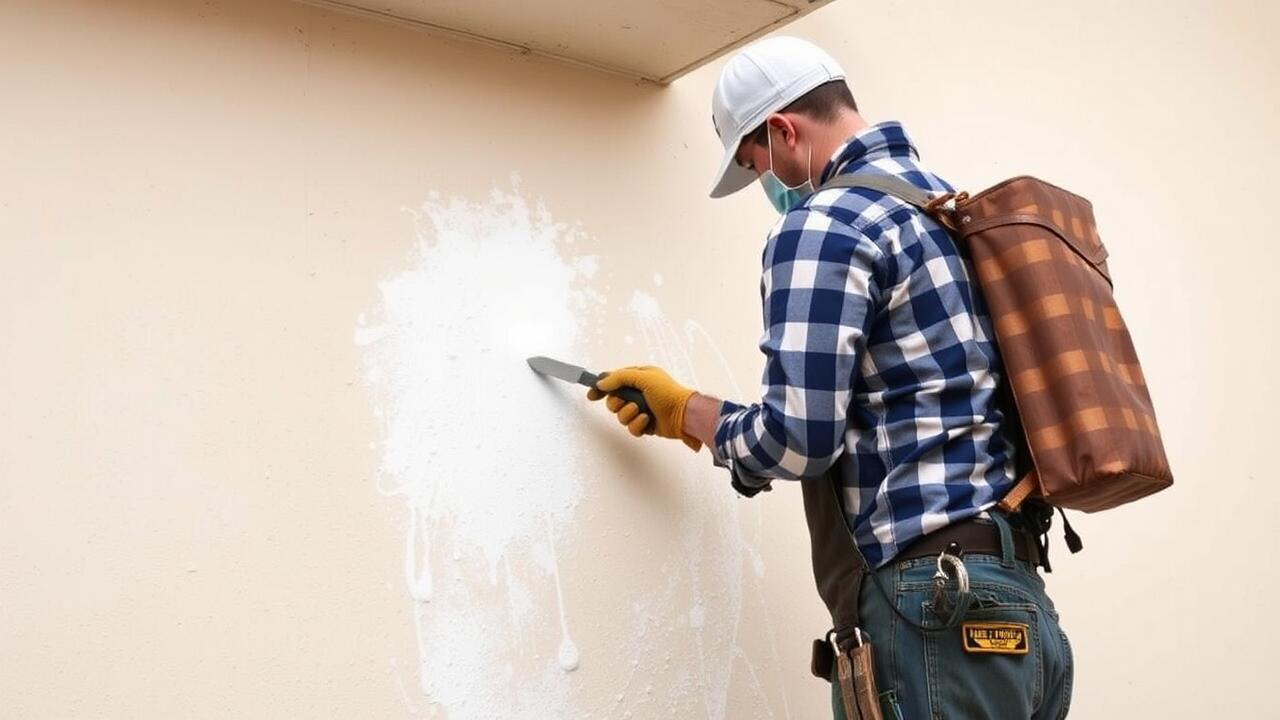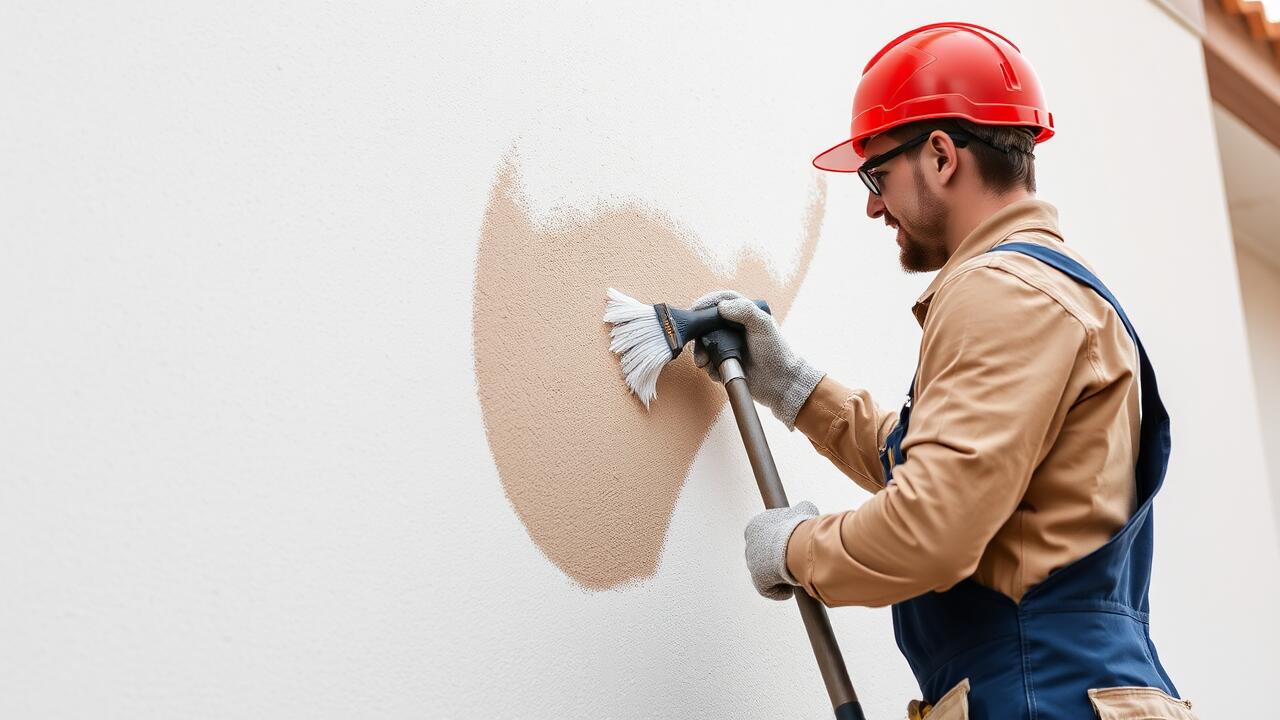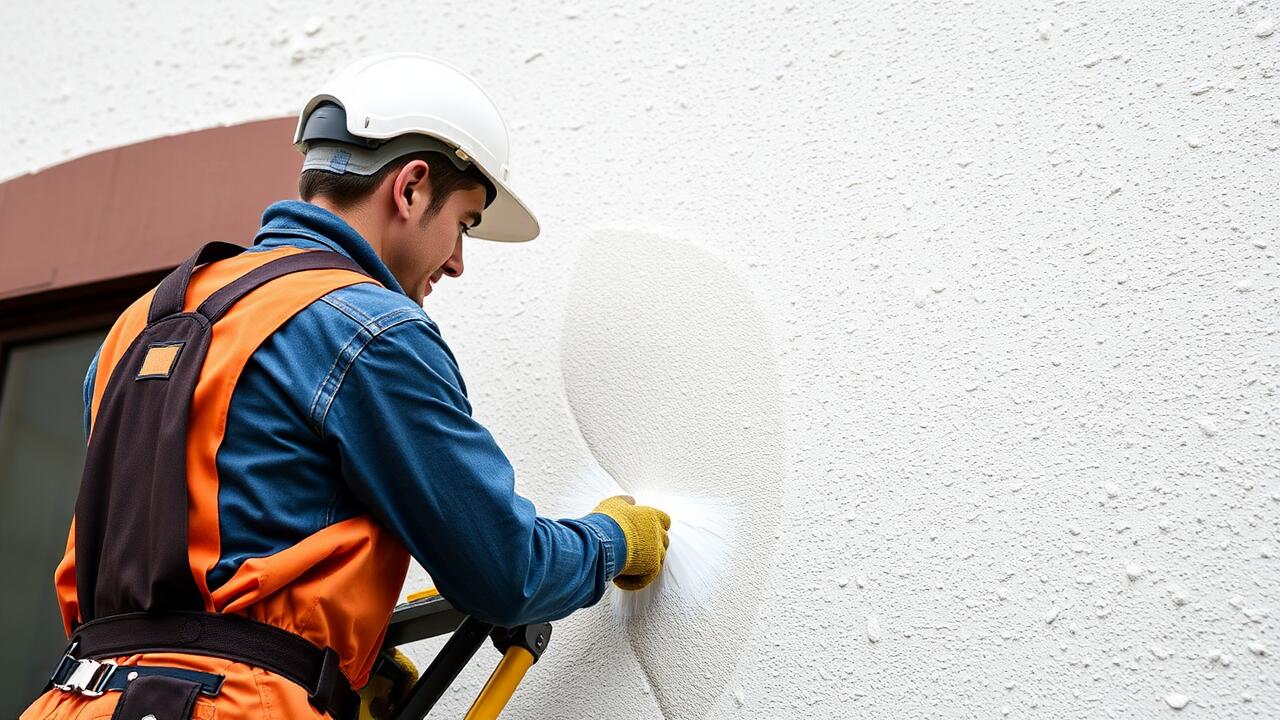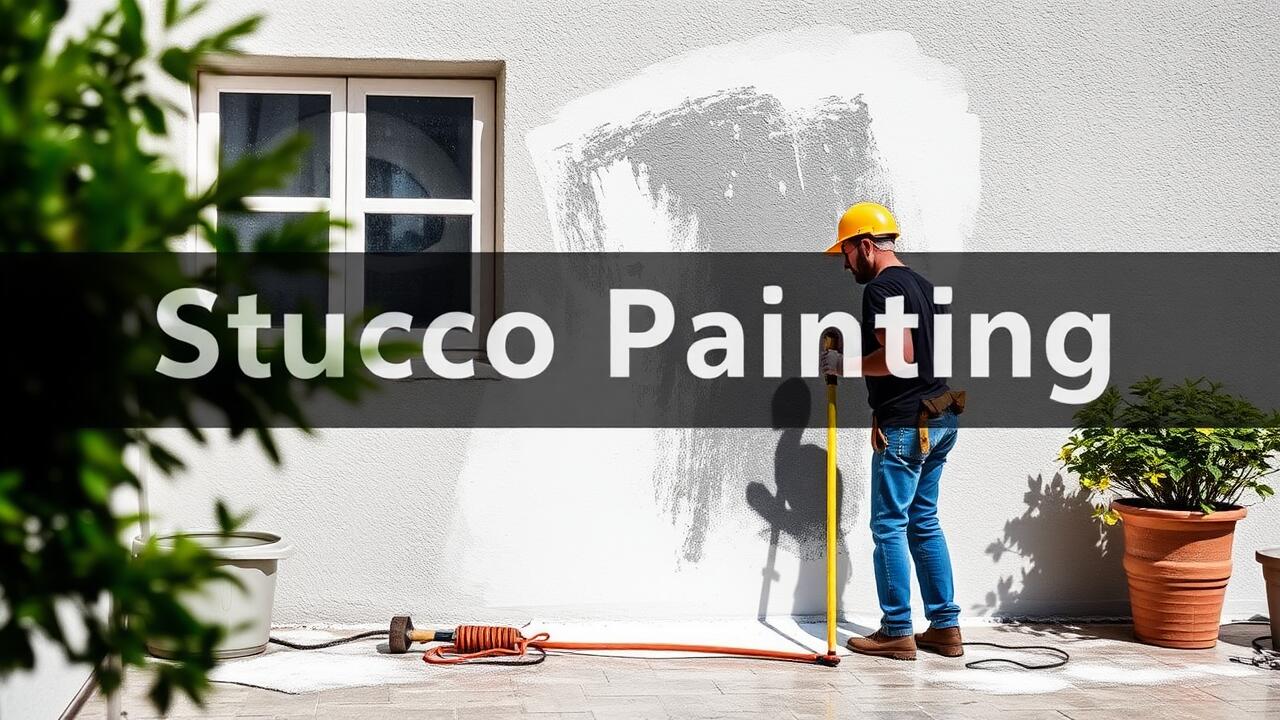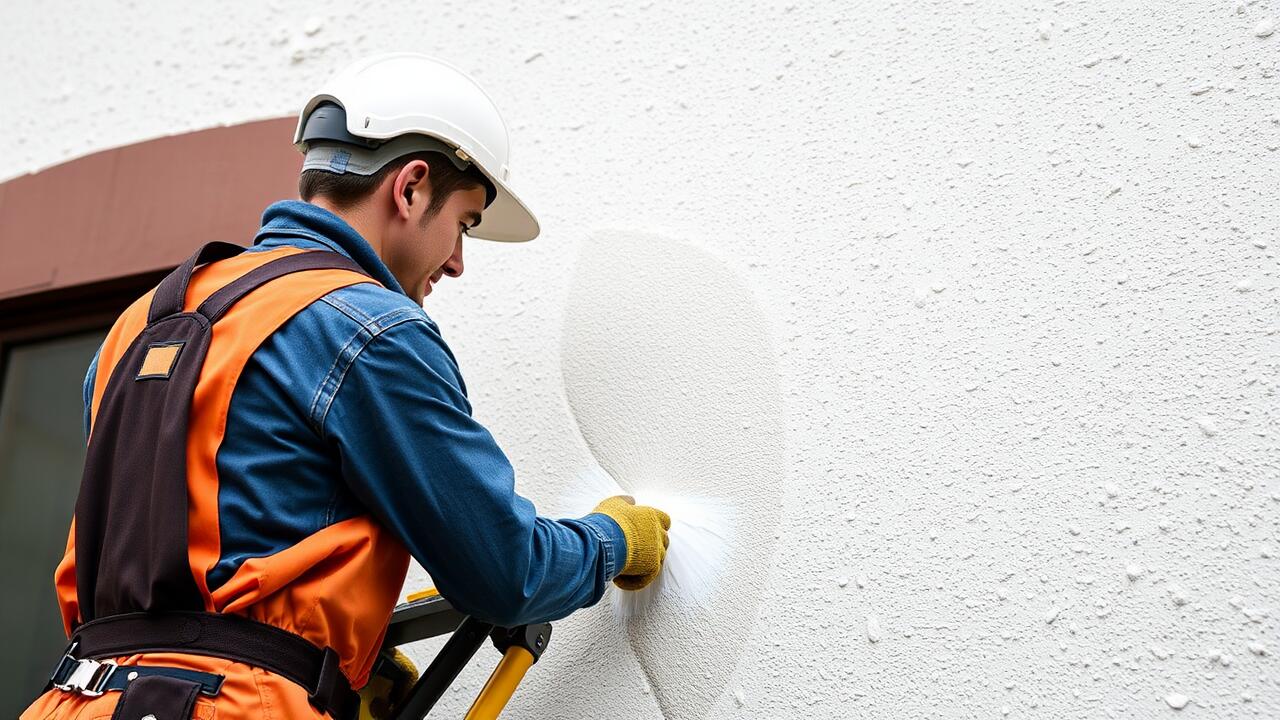
Environmental Impact of Painting Methods
The environmental impact of painting methods varies significantly based on the technique employed. Spraying paint can result in overspray, leading to paint particles drifting into surrounding areas. This can contribute to air pollution and environmental degradation. In contrast, rolling tends to produce less waste, allowing for more direct application of paint to the surface. As a result, using rollers can minimize the release of volatile organic compounds (VOCs) into the atmosphere.
For those considering projects like "Encino, Los Angeles Stucco Painting," it is essential to weigh the environmental consequences of each method. While spraying may offer efficiency and speed, rolling can promote a cleaner application process with fewer harmful emissions. The impact of these choices extends beyond aesthetics and affects local ecosystems and air quality in the surrounding communities.
Overspray and Waste Management
When considering the environmental impact of painting methods, overspray can significantly contribute to waste. Spray painting often creates fine mist particles that can drift away from the intended surface, landing on nearby plants, vehicles, or even neighboring properties. This unintended dispersion is particularly concerning in residential areas like Studio City, Los Angeles, where community aesthetics matter greatly. Employing proper techniques, such as using wind barriers, can help minimize overspray and maintain a tidy worksite.
Managing waste effectively during exterior painting is vital to reduce the environmental footprint. Collecting excess paint and overspray is essential in preventing chemicals from contaminating the surrounding area. For those involved in Studio City, Los Angeles stucco painting, utilizing drop cloths and painter's tape can help contain the mess. Proper disposal methods for leftover paint and materials also play a crucial role in ensuring sustainability within the painting process.
Recommended Tools for Spraying
When considering the best tools for spraying exterior paint on stucco, it's essential to choose equipment that ensures an even finish while minimizing overspray. A high-quality airless paint sprayer is often recommended, as it delivers thick paint efficiently and covers textured surfaces well. Additionally, using a tip size suited for the viscosity of the paint can enhance the application process. Protective gear, such as a mask and goggles, is also crucial while operating spray equipment to keep the painter safe from inhaling fumes.
For those involved in projects like Encino, Los Angeles Stucco Painting, versatility in tools can provide significant advantages. A pressure roller attachment can complement a spray system, allowing for touch-ups in areas that may require extra attention or coverage after spraying. Choosing a spray gun with adjustable pressure settings will help adapt to various stucco textures, ensuring a smooth application that adheres well to surfaces while improving the overall quality of the paint job.
Types of Spray Equipment
When considering spray equipment for exterior painting, there are several options available that cater to different needs and preferences. Airless sprayers are among the most common choices for stucco surfaces due to their ability to handle thicker paints and provide even coverage. These machines operate without air, allowing for minimal overspray and faster application. Some contractors in Brentwood, Los Angeles Stucco Painting recommend using air-assisted sprayers, which combine air with paint to create a finer mist, achieving a smooth finish ideal for intricate stucco finishes.
Another option is the HVLP (High Volume Low Pressure) sprayer, which is designed to reduce overspray and deliver high-quality results on detailed surfaces. HVLP sprayers use a high volume of air at low pressure to produce a soft spray that can effectively cover stucco textures without wastage. Each type of spray equipment has its unique applications and benefits, so selecting the right one depends on the specific requirements of the project and the desired finish quality. Proper setup and maintenance of these spray systems are crucial for achieving optimal results.
Recommended Tools for Rolling
When using rollers for exterior painting on stucco, selecting the right tools is essential for achieving a professional finish. Opt for a high-nap roller cover, typically ranging from ¾ to 1 inch, which helps to fill in the texture of the stucco. A thicker nap will accommodate the uneven surfaces commonly found on stucco walls, ensuring a thorough application of paint. Pairing these roller covers with a sturdy roller frame will provide better control and comfort during the painting process.
In addition to the roller, consider using brushes for edges and detailing. A tapered brush can effectively tackle corners and tight areas, preventing any paint from bleeding onto adjacent surfaces. If you aim for a smooth and even application, investing in high-quality paint materials is advisable. Selecting tools from trusted suppliers in your area, like those found in Silver Lake Heights, Los Angeles Stucco Painting, can also enhance your project’s outcome, ensuring durability and an attractive finish.
Types of Rollers and Brushes
When choosing the right tools for rolling exterior paint on stucco, the selection of rollers and brushes is crucial. Rollers with a thick nap, typically around ¾ to 1 inch, are essential for achieving a smooth finish on textured surfaces like stucco. These rollers penetrate the uneven surface, providing even coverage while minimizing the risk of paint slipping off, which is especially important for a project such as Studio City, Los Angeles Stucco Painting. For detailed areas and edges, high-quality brushes with synthetic bristles work best. They allow for precise application around windows, doors, and trim, ensuring that no area is left unpainted.
Additionally, the size of the roller can affect the overall performance of the painting job. A wider roller might cover more surface area quickly, but smaller rollers are advantageous for maneuvering in tight spaces. Choosing the appropriate tool not only influences the speed of the painting project but also impacts the final appearance of the exterior. For Studio City, Los Angeles Stucco Painting, opting for the right combination of rollers and brushes can enhance the texture while providing durability against the elements.
FAQS
What are the main differences between spraying and rolling paint on stucco?
Spraying allows for a more even coat and quicker application, particularly on textured surfaces like stucco. Rolling can provide better control and is often preferred for smaller areas or touch-ups.
Does spraying paint lead to more overspray compared to rolling?
Yes, spraying can create overspray, which is the paint that drifts away from the intended surface. This can result in waste and require additional cleanup, while rolling typically produces less overspray.
What type of spray equipment is recommended for painting stucco?
Airless paint sprayers are generally recommended for stucco as they can handle thick paints and provide a uniform finish. It’s important to choose a sprayer with adjustable pressure settings for optimal results.
Can I use the same tools for both spraying and rolling?
While some tools, like paint trays and ladders, can be used for both methods, specific equipment like sprayers and rollers are designed for their respective applications and should be chosen accordingly for the best results.
How do I decide whether to spray or roll paint on my stucco exterior?
Consider factors such as the size of the area, the texture of the stucco, your experience level, and environmental concerns. If you have a large, textured surface, spraying may be more efficient, while rolling may be better for smaller, detailed work.
